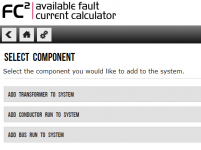IMO, if the utility transformer is quite big and very near to the consumer's building, even a 25-foot service conductor cannot bring down the available fault current level to the rating of most common electrical equipment. Been there, I got my share of burning candles in the night, so to speak! There was a project where it was more economical to have its dedicated transformer than to connect to the common residential distribution lines and buy a DP with a high IC rating.
In general yes, but in cases where you maybe have a larger transformer for the permanent service but are connecting a temp service of lesser capacity to it for construction the smaller conductor to the temp service cuts down the available fault current because of conductor impedance pretty quick compared to what you may have at the permanent service via the larger conductors.
I just used some made up figures for a 500 kVA 208/120 transformer @ 6% impedance and 25 feet of conductor length.
Did it one time with 3 parallel runs of 600 copper and came up with about 22kA at the load end. Probably not a big deal as this maybe would be 1200 amp gear and has a main rating at least 25 kA and very possibly even 42kA.
Did it with single set of 3AWG for a possible temporary service and came up with about 11.3kA at the load end. Increased length another 10 feet and got under 10kA, which would let you use 10kA equipment for that temp service.
Decided to run it with 6 AWG for even smaller temp service and at 25 feet length it only had 7759 amps available fault current at load end. Reduced length until I got to 17 feet and still was under 10kA 16 was just a little over 10kA.


